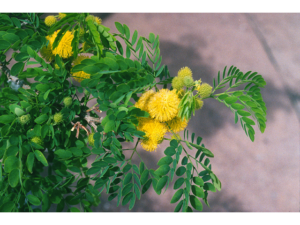Ornamental Trees: Plant This, Not That
November is a perfect time to plant ornamental trees with cooler temperatures allowing for a gentler transition from local nurseries to their permanent spots throughout Texas landscapes. That’s one reason Texas Arbor Day is rooted in the beginning of the month. Selecting the right ornamental tree for the right spot in your landscape might have you stumped– but this helpful guide will help you branch out with better choices to set you up for success!
Avoid Planting: Bradford Pear- First lauded for its densely blooming spring flowers, this tree is often referred to as the worst ornamental tree in America. In addition to their putrid smelling blooms, this callery pear cultivar often produces seeds which have spread to nearby wild areas, invasively pushing out native species and the wildlife that call them home. If that’s not enough, their acute branch angles make them prone to splitting during storm season, creating a hazard for homes, cars and anything that lies below. Ultimately this fast growing tree is also a fast dying tree to boot.
A Better Choice: Mexican Plum- This Texas native ornamental tree typically grows up to 15-20ft tall exploding with beautiful, sweet- smelling white blooms that rival most spring flowering trees. It’s a low water user that thrives in full sun to part shade needing very little care once established. Bonus: It’s a host plant for the tiger swallowtail butterfly and its delicious fruits are a favorite for wildlife AND wild-gardeners, often used to make jelly!
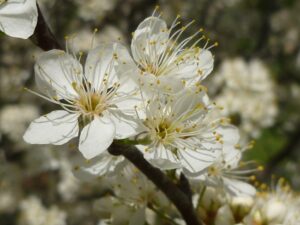
Avoid Planting: Crepe Myrtle: Folks are often shocked that we don’t mention crepe myrtles when recommending ornamental trees for North Texas. And while these Eastern Asian flowering trees are admittedly heat and drought tolerant, they aren’t as en vogue as they once were. Their over planting in many areas has contributed to an urban monoculture of sorts– which is problematic due to unsightly problems of bark scale, powdery mildew and sooty mold running rampant through many North Texas neighborhoods. Ridiculous pruning practices paired with their propensity to freeze back have pushed them on our “meh” list. The final nail in their coffin for me is that while the blooms can be pretty, they offer little value to native pollinators in need. Now I’m not saying cut them down quite yet if you have a healthy specimen, but you just might want to consider some better adapted alternatives before you plant a new one. And don’t worry, your neighbors with likely keep on planting them… everywhere.
A Better Choice: Desert Willow/ Chitalpa- The desert willow is a beautiful long blooming Texas native ornamental tree with striking blooms that last all summer long. They are perfect 15-20 ft tall ornamental trees for sunny spots with good drainage, and need very little care once established. Desert willows are also resistant to most pest and disease issues. If you’re looking for something a little bit different consider their cousins the Chitalpa, an inter-generic hybrid cross between desert willow (Chilopsis linearis) and southern catalpa (Catalpa bignonoides). It grows a little bit bigger, up to 25-30 ft tall and has slightly larger blooms. This hybrid between two Texas native trees was actually first bred in Uzbekistan!
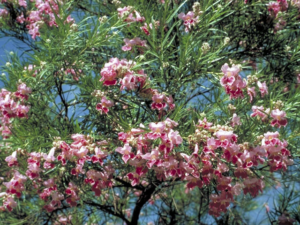
Avoid Planting: Chinese Pistache- Admittedly the Chinese Pistache has incredible flame-red fall foliage, especially attractive in the male specimens. The trouble lies when the fruitless male trees pollinate the red berry-producing females. This fertilized seed is then dispersed by wildlife throughout wild areas where is has recently become a problematic nuisance tree. Like other invasive species it spreads from home landscapes to wild areas where it disturbs native ecology. I’m afraid we are just starting to see the beginning of it’s aggressive nature. Removing female berry producing trees and replacing with better adapted natives, might help keep them in check.
Do Plant: Cedar Elm- This striking Texas tough native tree reaches up to 50ft tall and ignites with bright yellow to gold foliage in fall, producing some of the most amazing fall colors in our area. This tough and adaptable shade tree is the most wide-spread native elm in Texas, adapted to heavy clays, compacted soils, and tolerates both alkaline and salty soils. All this– plus it has excellent heat and drought tolerance! It is typically an upright or vase-shaped shade tree, excellent for providing protection from the summer heat. It’s also deciduous, dropping its golden yellow fall leaves to let in warming winter sun.
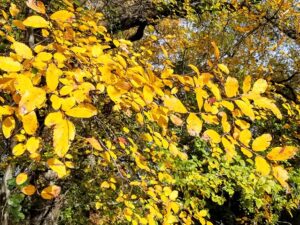
Avoid Planting: Vitex- This non-native Eurasian tree is sometimes confusingly called Texas Lilac, but although its long been grown in Texas for its large strikingly beautiful (and medicinal) blooms, unfortunately its invasive tendency continues to spread. While its aggressive nature was once confined to the hill country and parts of western Tarrant County, it is now a fairly common weed in across North Texas landscapes and natural areas. A long-time favorite of mine for its adaptability and pollinator value, its propensity to create monocultures that crowd out native species has made its ornamental plantings problematic, so much so that it pains me to say its recently slide into my Do Not Plant list.
A Sterile Vitex? For those that love this tree but share our concerns about its invasive tendencies, ‘Summertime Blues’ is one of the sterile compact hybrids that still shows to provide some pollinator value with its blooms. In over 15 years in production, it has not been known to produce viable seeds.
A Better Choice Texas Mountain Laurel- This native evergreen teeters on the line of being categorized as a small tree or a larger shrub in North Texas landscapes. Limbing them up slightly can accentuate a more pronounced tree-like trunk. Its large clusters of sweet-smelling purple blooms emerge each spring, and are as showy as they are delightfully aromatic. They thrive in well-draining soils in full sun to part shade, a perfect backdrop for finer textures and yellow-blooming perennials. For unique gray-foliaged specimens, look into the wonderfully fuzzy ‘Siver Peso’ and ‘Silver Sierra’ cultivars.
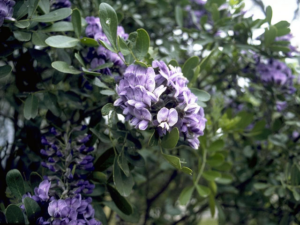
Avoid Planting: Mimosa: Once a very popular multi-branched ornamental tree, mimosas have been prized for their fuzzy pink summer blooms. Unfortunately, this non-native tree from the East has escaped cultivation and spread into local creeks and greenbelts– forming stands which outcompete native species, displacing the wildlife that use those native species. Its problematic invasive nature makes it a species to be avoided.
Chocolate Mimosa: If you have made the decision that you can’t live without a mimosa, a better choice is the chocolatey maroon-leaved ‘Chocolate’ cultivar that produces fewer viable seeds, reducing (but not eliminating) their propensity to spread.
A Better Choice Goldenball Leadtree: One of our favorite ornamental bloomers, this Texas native is prized for its perfumed yellow, almost Seussian, puffballs. Indigenous to Southwest Texas, its best adapted to the sunniest well-draining spots in our region, especially areas near heat island contributing concrete and west facing brick walls. Although wet winters can take their toll, causing some winter dieback, we were elated to see so many goldenball leadtrees quickly bounce back from the extreme temperatures experienced in February 2021.
